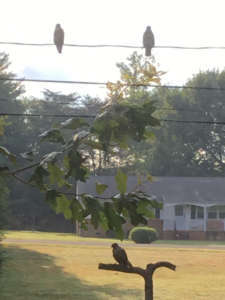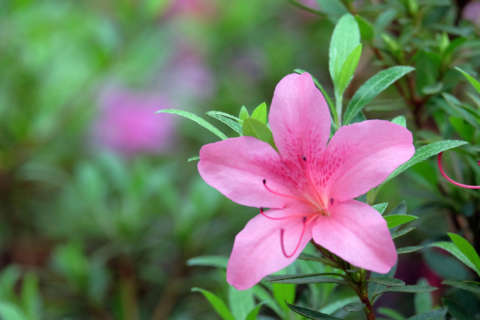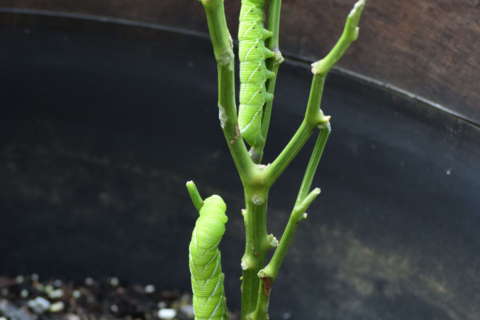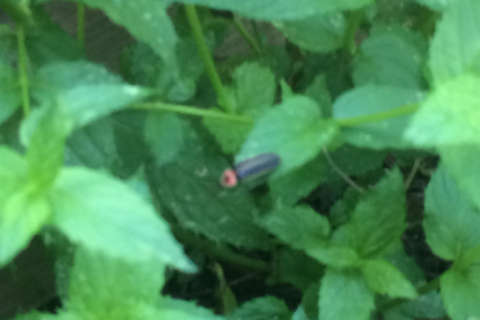Well, we wished for rain during that recent short (but brutal) hot and dry stretch — which should finally convince us to be careful what we wish for! (I got a solid five inches over just two days.)
Time for me to issue some wet weather warnings:
- Do not cut your lawn when its soaking wet; cutting wet turf shreds the grass blades beyond repair. Warm and dry weather is on the horizon, and it’s much better to let the grass get a little tall than to cut it when wet.
- It may seem obvious, but do not water your lawn or garden until we’re well into the third or fourth hot and dry day without rain. Over-watering is the single biggest human cause of premature plant death.
- Whether you’re a homeowner or someone in charge of a facility, make sure automatic sprinklers are reset or turned off to avoid root rot.
Tread Lightly While Soil is Soaked
Now that our soil is saturated, it means no cutting, walking or parking on lawns.
While we all want to help our poor bloated vegetable gardens right now, this wicked wetness makes it tricky. The easiest way to kill string beans, squash plants and many other crops is to handle the plants when they’re wet — so stay away until the leaves are dry.
If you have a raised bed garden with lanes (like you should!), you can safely walk down those lanes, inspecting your plants and harvesting things like ripe tomatoes and peppers, making sure to keep leaf contact to a minimum.
But if you have a flat earth garden, stay out of the area until the soil dries. Your plants are already suffering from the lack of drainage your old-school design ensures, and if you add to their stress by walking on that saturated soil, it will become permanently compacted and unsuitable for any kind of plant.
Why is Mike McGrath like Kevin Costner?
Patti and Lew in Fredericksburg certainly got my attention when they began their email with the words: “To quote you & Kevin Costner, ‘If you build it, they will come!’”
They explain: “We have a severe vole problem and perked up when we heard your sage advice to ‘build a raptor perch & you will be AMAZED at how many birds of prey you get’; so, we built one. After about a month, a hawk started occasionally sitting on the telephone wires ABOVE the perch. Then last week an adolescent red-tailed hawk started using the actual perch every day. Now look at the attached picture; there are three hawks taking turns using the perch. We’re hoping we also get an owl or two eventually.”

Thanks for the report and the picture, Lou and Patti — hawks and owls are the best vole control!
Vole Control: Juicy Fruit a Waste of Good Gum
Patti and Lew in Fredericksburg also explained that they have “tried rocky soil additives and Juicy fruit gum” with no results. Then they heard my advice to erect a raptor perch, which is now occupied by three different hawks.
Anyway, voles are mouse-sized shrew-like creatures that make little runways in lawns, small holes in the ground and eat underground plant parts — especially tulips and other tasty spring bulbs and the roots of hostas and other shrubs.
Sorry, but the old “Juicy Fruit gum trick” does not work on voles or moles. Moles only eat live food like grubs and earthworms. Voles only eat plants. Neither chews gum.
The “rocky soil additive” you mention can be effective. An old and reliable anti-vole technique is to surround newly-planted roots and bulbs with sharp stones underground; great for drainage and bad for voles.
Shoeless Joe Owl May Already be on Deck — eh, on Perch
Patti and Lew in Fredericksburg also mentioned they are anxiously awaiting for owls to join the three hawks on their raptor perch.
I suspect the owls are already there — but they’ll be difficult to see. They are nocturnal and amazingly silent fliers, making them experts at avoiding human detection.
Instead of chasing them away while you try and catch a glimpse, look for “owl pellets” underneath the perch; that mixture of dried guano and ground up little bones is what’s left of your voles. You should see lots of pellets; owls are the number one predator of voles.
Other tactics with a history of success include spreading or spraying a commercial mole and vole repellent whose active ingredient is castor oil over the area, and putting out battery-powered electronic mouse traps baited with peanut butter; safe for birds but deadly to voles.







